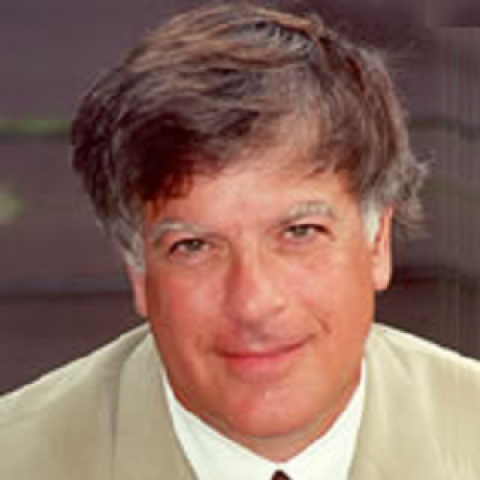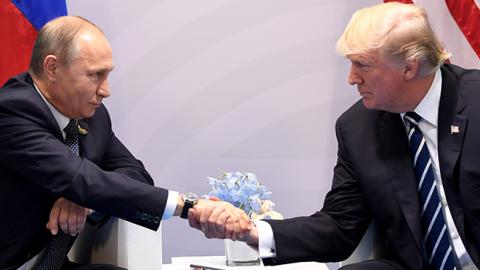When President Trump meets Vladimir Putin in Hamburg on Friday, he needs to put aside any thought of another “reset” of U.S.-Russian relations. This is necessary not because of Russia’s role in the 2016 U.S. election but because any compromise of the American deterrent posture toward Russia will make a dangerous international situation even worse.
U.S. and Russian officials have cited Ukraine and Syria as areas where agreement may be possible. Yet sanctions against Russians close to Mr. Putin, and against Russia’s banking and energy industries, are necessary to prevent a new outbreak of war in Ukraine. After 10,000 deaths on all sides, including 3,000 civilians, Russia is building a new railway line along its border with Ukraine that would make it possible to transfer troops to the south. At the same time, Moscow is preparing to hold its largest military exercises since 1991, involving an estimated 400,000 to 500,000 troops, in September.
Whether or not Russia is preparing to attack, it has not achieved its objectives in Ukraine, including the overthrow of the existing government. The Ukrainian army has improved rapidly. At the same time, American and European sanctions have caused huge losses to Mr. Putin’s cronies, who are believed to be nominal owners of major assets world-wide whose real beneficiary is Putin. That may be why Russia abandoned plans to carve a “New Russia” out of Ukrainian territory.
Last month, Syrian tanks breached the line of separation between the forces of the Russian-backed Assad regime and the U.S.-backed and Kurdish-led Syrian Democratic Forces. A Syrian fighter jet began dropping bombs near U.S.-backed forces, and the U.S. shot it down. The Russians then threatened to shoot down coalition aircraft. After several hours of high tension, the Russians agreed to ease the crisis—until next time.
Making a new “reset” even more inadvisable are signs of Russian involvement with terrorism in Ukraine, Western Europe and in Russia itself. On June 27, Maksim Shapoval, a colonel in Ukrainian military intelligence, was killed by a car bomb in central Kiev. Pavel Sheremet, a Kremlin critic who wrote for the site Ukrainskaya Pravda, was killed in an identical manner in Kiev on July 20, 2016. Russia said Ukraine “had failed to protect him.”
On March 23, Denis Voronenkov, a former Russian legislator who fled to Ukraine, was shot dead outside the Premier Palace Hotel. There was also an attempt to kill Amina Okueva and her husband, Adam Osmayev, Chechens who fought for Ukraine in the Donbass. Artur Denisultanov-Kurmakyev, a Chechen assassin posing as a French journalist, opened fire on them, but Mrs. Okuyeva shot the assassin four times. Both were wounded but survived.
Mr. Denisultanov-Kurmakyev earlier worked in Western Europe for the pro-Russian Chechen leader Ramzan Kadyrov, and many members of the Chechen diaspora are living in fear of Russian supported assassins.
There are also questions about terror in Russia. On April 3 a bomb exploded in the St. Petersburg metro, killing 14, many of them students. The bombing came a week after nationwide anticorruption protests in which young people played the main role. In the aftermath of the attack, Yuri Shvytkin, a Duma deputy, proposed a moratorium on public protests.
Opposition leaders in Russia noted that the Russian Ministry of Emergency Situations reported two explosions, one near the Technical Institute station and the other on the red line. A second bomb was later found unexploded in a train on the red line, raising the question of how the authorities knew about the second bomb before it was discovered.
Mr. Trump must stick to a formal exchange of positions to avoid being drawn into a false logic. The Putin regime treats the interests of the state, which it identifies with itself, as more important than any objective reality. When Mr. Assad used chemical weapons, Mr. Putin said the charges against Syria were a “provocation.”
After Malaysian Airlines Flight 17 was shot down over Eastern Ukraine in July 2014, killing 298, the Russians said it was destroyed by a Ukrainian missile and accused the Dutch investigators of bias. In fact, the missile came from a Russian supplied Buk antiaircraft battery, and its path from separatist-held territory was identified by satellite data.
More recently, when the U.S. announced plans to deploy the Terminal High Altitude Area Defense missile-defense system in South Korea, Sergey Ryabkov, Russia’s deputy foreign minister, declared it was time to halt the “demonization of North Korea.”
Faced with this type of mendacity, Mr. Trump needs to show that attempts at deception will not work and that while specific, narrow agreements may be possible, the U.S. is prepared to deter Russian aggression.
The protest movement has reappeared in Russia. Denis Volkov, a researcher with the Levada Center, has explained the popularity of protest leader Alexei Navalny among young Russians. “He focuses on simple but crucial issues: it is bad to lie, steal, and to be a hypocrite,” Mr. Volkov writes. “Corruption and bribes are wrong.” In the face of this kind of appeal, the U.S. cannot seek an unprincipled deal with Mr. Putin if it wishes to have some influence over Russia’s fate in the years ahead.















